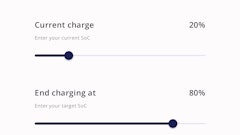
In the ever-evolving fleet industry, small businesses face unique challenges that can hinder their growth and profitability. One such challenge – the pervasive practice of double brokering – is on the rise due to lack of regulatory oversight and supply chain disruptions. In this process, a carrier illegally outsources or "re-brokers" a load to another carrier after being contracted and paid. Fraudulent brokers have taken advantage of this concept and legitimate carriers are often left fighting for payment that was given to the original, fraudulent carrier.
Double-brokering poses significant implications for small fleets specifically, including financial losses, reputational damage, legal consequences, operational disruptions, limited growth opportunities, and risk of nonpayment. However, amid these challenges, carriers can adopt certain preventative measures and embrace technology that empowers small fleets to thrive in the competitive marketplace.
Preventative measures
One important step to avoid double brokering is to verify load board listings. It is essential to exercise caution when accepting offers that appear too good to be true, including unusually low prices or unrealistically quick delivery times. To mitigate the risk, carriers should cross-check load board listings on multiple platforms to identify any discrepancies in rates, delivery times, or other shipment details.
In addition to verifying load board listings, it is crucial to work with trusted partners. Conducting thorough research and reading reviews can help ensure that you collaborate with reputable professionals in the industry. By building relationships and networking with brokers who have a proven track record of reliability and integrity, carriers can minimize the chances of getting involved in double-brokering transactions.
Lastly, ensure secure payments. Double brokering often leads to payment disputes and non-payment issues, which can have a severe financial impact on small-to-midsized fleet. To mitigate this risk, consider working with brokering services that offer additional safeguards. This ensures that payments are made in a timely and secure manner. Alternatively, some services conduct credit checks on brokers to assess their financial stability and credibility before engaging in transactions. These measures can provide an added layer of protection and help prevent payment-related complications associated with double brokering.
The role of technology
With the rise of double brokering, technology has become a powerful tool to help mitigate risk for small fleets as it can improve transparency and communication, minimize manual processes, and connect shippers and carriers directly.
Enhanced visibility and transparency can also significantly improve the experience for small fleets. By leveraging digital tracking technologies, such as GPS and advanced telematics systems, small fleets can have real-time insights into the whereabouts and status of their shipments. This allows them to monitor the progress of each shipment and ensure that it is being handled efficiently. It is vital for small fleets to effectively track their assets, reduce the risk of miscommunications, and enhance customer satisfaction.
Additionally, manual processes and paperwork often contribute to the complexities associated with double brokering. By automating solutions that can streamline operations for small fleets, carriers can handle order processing, dispatching, and even invoicing – reducing the need for manual intervention and minimizing the chances of errors. By integrating fleet management software and transportation management systems, small fleets can efficiently manage their operations, ensuring seamless workflows and minimizing the risk of double-brokering due to administrative inefficiencies.
Perhaps the most integral development for fleets leveraging technology is the concept of digital marketplaces, providing a platform where shippers and carriers can connect directly. These online platforms create an environment of transparency and fair competition, minimizing the need for intermediaries and preventing double brokering. For small fleets, digital marketplaces offer the opportunity to showcase their capabilities, secure contracts directly from shippers, and expand their customer base. These platforms often include features such as bidding systems, rating systems, and integrated payment systems, further simplifying the process of finding suitable shipping opportunities and ensuring reliable transactions. This additional connection allows small fleets to collaborate and form networks, strengthening their collective bargaining power. Such efforts not only minimize the risk of double brokering but also foster a sense of solidarity among small fleets, promoting their collective growth and sustainability.
Double brokering is on the rise and poses significant risks for small fleets, including financial losses, reputational damage, and operational disruptions. However, by implementing preventative measures such as verifying load board listings, working with trusted partners, and ensuring secure payments, small fleets can mitigate these risks and protect their businesses. Embracing technology through digital tracking systems, automation solutions, and online marketplaces can further aid in preventing double brokering and enhancing operational efficiency. With a commitment to transparency, reliability, and innovation, small fleets can navigate the challenges of the industry and position themselves for success.


























